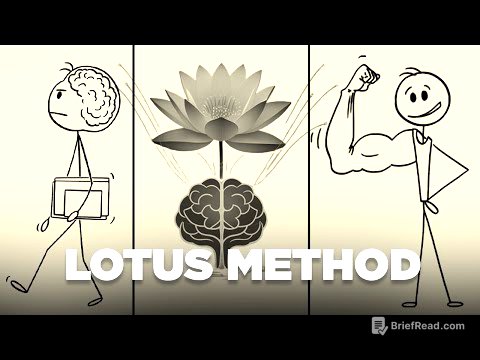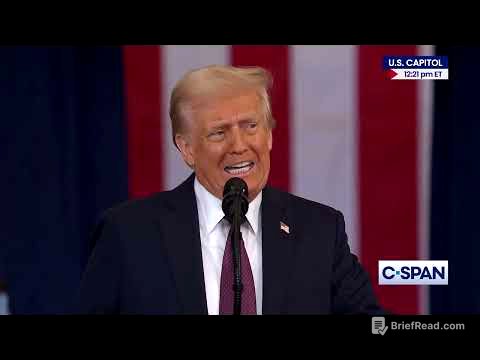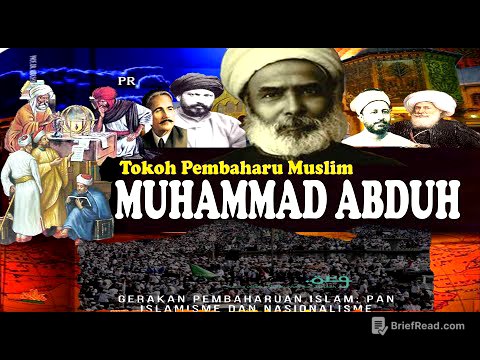TLDR;
This YouTube video by Mr. Sinn provides a comprehensive review of Unit 4: Political Patterns and Processes for AP Human Geography. The review covers key concepts such as the differences between nations and states, nation-states, multinational states, multi-state nations, and stateless nations. It also discusses autonomous and semi-autonomous regions, sovereignty, self-determination, colonialism, imperialism, different types of boundaries, territoriality, shatter belts, neocolonialism, choke points, the Law of the Sea, gerrymandering, forms of governance (unitary and federal), devolution, ethnic separatism, ethnic cleansing, irredentism, democratization, and supranational organizations.
- Key concepts: nation vs. state, types of boundaries, devolution
- Real-world examples: Japan, United States, Korea, Kurdistan, Africa, South China Sea
- Focus on application: connecting terms to real-world scenarios
Intro: Unit 4 Political Patterns and Processes [0:00]
Mr. Sinn welcomes viewers to a review session for Unit 4, Political Patterns and Processes, highlighting that this is a recap of a live stream. He encourages viewers to join future live streams for interactive learning and teases the content to be covered, including key distinctions and concepts within political geography.
Nation vs. State [0:32]
The fundamental difference between a nation and a state is explained. A state is defined by a permanent population, defined borders, a sovereign government, and recognition by other states. A nation, on the other hand, is a group of people sharing a common culture, language, history, and often a homeland, potentially with self-determination. The importance of distinguishing between these terms is emphasized for understanding concepts like multi-state nations and multinational states.
Nation State vs. Multinational State [2:20]
The demographic profile of Japan is presented as an example of a nation-state due to its high ethnic homogeneity (97.9% Japanese). The United States is contrasted as a multinational state, characterized by its diverse array of cultures and ethnicities. The terms are broken down to emphasize that a nation-state has one nation within one state, while a multinational state contains multiple nations within a single state. Highlighting and carefully reading these terms on the AP test is advised to avoid confusion.
Multi-State Nation [5:20]
Korea is used as an example of a multi-state nation, where a single nation is divided across two states (North and South Korea). The focus is on understanding the term by breaking it down: "multi-state" refers to two or more states, and "nation" indicates that the same nation is spread across these states.
Stateless Nation [6:44]
Kurdistan is presented as a prime example of a stateless nation, as the Kurds possess a distinct culture, history, and perceived homeland but lack an officially recognized government and defined boundaries. Palestine and Tibet are also mentioned as other possible examples.
Autonomous and Semi-Autonomous Regions [8:12]
Autonomous regions are defined as areas within a state that possess significant self-governance, allowing them considerable control over their rules and regulations, though they are not fully independent. Semi-autonomous regions have a more moderate degree of independence, with the larger state retaining the power to intervene and enforce its will. The key difference lies in the level of independence each region has from the central government.
Sovereignty and Self-Determination [9:20]
Sovereignty is defined as the authority of a state to govern itself, including both domestic and international affairs. Challenges to sovereignty are discussed, noting that even powerful countries like the United States cannot act without considering the implications for allies and international relations. Self-determination is explained as the right or desire of a nation to govern itself, often driven by the need to protect its culture and identity.
Colonialism and Imperialism [12:09]
Colonialism involves the physical occupation and economic exploitation of an area, often through the establishment of colonies. Imperialism, on the other hand, is a broader policy or ideology of exerting influence or power over another place without necessarily establishing a physical colony. The discussion sets the stage for connecting these historical concepts to modern-day neocolonialism.
Types of Boundaries [14:06]
Boundaries can be defined (fixed), delimited (drawn on a map), and demarcated (physically marked with walls or signs). The different types of boundaries are relic, superimposed, antecedent, geometric, subsequent, and consequent. Examples are provided for each type, such as the Berlin Wall (relic), boundaries in Africa set by the Berlin Conference (superimposed), the US-Canada border (antecedent and geometric), and the boundaries between India and Pakistan (consequent).
Examples of Boundaries [17:32]
The Berlin Wall is identified as a relic boundary because it is no longer an active border but remains as a remnant of the past. The straight lines of many western US states are identified as geometric boundaries. The superimposed boundaries in Africa resulting from the Berlin Conference are highlighted, emphasizing that these boundaries were imposed by foreign states without regard for the existing cultural landscape.
Berlin Conference [20:45]
The Berlin Conference is discussed as a key event that shaped Africa, leading to the creation of boundaries that did not reflect the cultures living there and establishing states reliant on European powers for resource extraction. This historical context is linked to later discussions of core-periphery relationships and dependency theory in Unit 7.
Territoriality, Shatter Belts, Neocolonialism, and Choke Points [22:46]
Territoriality is defined as the connection people have to their land, culture, and economic systems, reflecting how ownership of an area is communicated. Shatter belts are regions caught between external forces, exemplified by the Cold War division of Europe. Neocolonialism involves the use of political, cultural, and economic power to influence or control another country, often through multinational corporations or core countries exerting influence over periphery countries. Choke points are strategic areas that must be passed to reach a destination, such as the Suez Canal and the Strait of Hormuz, control of which can grant significant influence.
Law of the Sea and South China Sea [27:04]
The Law of the Sea, governed by the United Nations Convention on the Law of the Sea (UNCLOS), establishes different zones, including territorial waters, contiguous zones, and exclusive economic zones (EEZ). The EEZ extends 200 nautical miles, granting a country control over resources within that zone. The South China Sea is presented as a contentious area due to China's construction of islands to expand its EEZ, conflicting with the claims of other countries and leading to international tensions.
Voting Districts and Gerrymandering [31:07]
Voting districts are geographic areas used for holding elections, often located in schools and community centers. Gerrymandering is the process of redistricting to favor a particular political party, achieved through techniques like packing (concentrating like-minded voters into one district) and cracking (spreading like-minded voters across multiple districts). Despite being technically illegal, gerrymandering is practiced by both parties and can significantly alter election outcomes.
Forms of Governance: Unitary and Federal [34:15]
Forms of governance are discussed, focusing on unitary and federal systems. In a unitary system, the central government holds most of the power, while in a federal system, power is shared between the central and regional governments. Unitary states are often nation-states with homogeneous populations, while multinational states may adopt federalism to accommodate regional differences.
Devolution, Ethnic Separatism, Ethnic Cleansing, and Irredentism [36:07]
Devolution is the transfer of power from a national government to regional governments, distinct from federalism, which is the sharing of power. Ethnic separatism occurs when a group identifies more strongly with its ethnicity than with the state, often leading to demands for autonomy. Ethnic cleansing involves a government attacking an ethnic group to remove them from the state. Irredentism is the attempt to reunite parts of a nation that are divided across different states, exemplified by Russia's actions in Ukraine and potentially China's stance on Taiwan.
Causes of Devolution and Examples [39:33]
Various factors can cause devolution, including physical geography, ethnic separatism, terrorism, economic and social problems, and irredentism. Specific examples include the Basques and Catalans in Spain, Belgium, Myammar, and Nigeria. The Basques exemplify ethnic separatism due to physical separation, while the Catalans' push for devolution is tied to economic factors. Linguistic divides in Belgium and ethnic cleansing in Myammar are also discussed.
Disintegrate, Democratization, and Supernational Organizations [45:02]
Disintegration refers to states breaking up into smaller parts. Democratization is the process of increasing democracy, often facilitated by technology, as seen in the Arab Spring. Supernational organizations, such as the UN, NATO, EU, WTO, and Arctic Council, require member states to give up some sovereignty to address larger issues.
Centripetal and Centrifugal Forces, Ethno-Nationalism, and Failed State [49:51]
Centripetal forces pull people together, such as shared culture or a common enemy, while centrifugal forces push people apart, such as political divisions. Ethno-nationalism is a form of nationalism defined by ethnicity, which can lead to conflict or unification. A failed state is one where the government can no longer function or control its territory, such as Syria during its civil war.
Outro [52:47]
Mr. Sinn concludes the review, reminding viewers of available resources like the Ultimate Review Packet and Exam Slayer, and promoting the next live review session.








